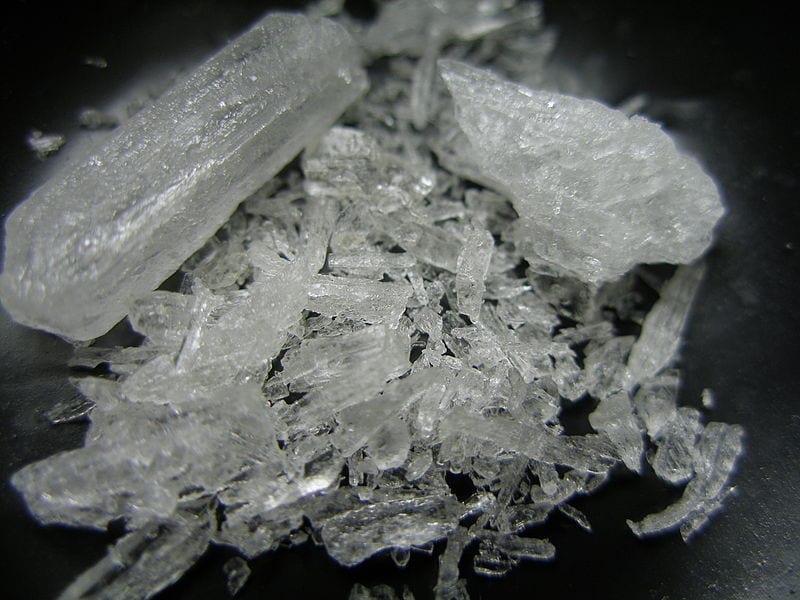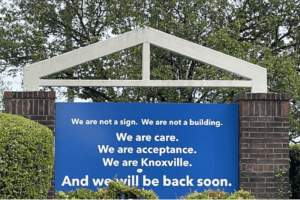The Spacemen of the Drug Epidemic
Cleansing buildings until there’s little to no evidence of devastation.

Written by Tom Cruise
They don white, oversized suits and place masks over their heads. They look like they are protected from the vacuum of space, preparing for a trip to the moon. They move slowly, cautiously.
These spacemen are preparing to enter a different kind of vacuum: One that’s gripped the nation for years, ripping homes, families and lives apart. These spacemen are preparing to enter a quarantine zone.
Quarantine reason: methamphetamine lab.
Meth lab cleanup is common business in Tennessee, and business is booming. According to the Tennessee Department of Environment and Conservation, 2,390 quarantines have been issued by law enforcement since 2007.
Of that number, 1,201 properties have been cleaned, recertified for human use and released from quarantine. What’s left are 1,189 properties still under quarantine, some for as long as 10 years.
Environmental Remediation Services in Seymour, Tennessee, is one of many companies that employ the men in white. William France, company vice president, is not surprised by the statistics. He believes cost – typically around $8,000 – will keep many properties quarantined forever.
“People don’t have to have their properties cleaned,” France says. “There is no law saying they are required to clean it; most refuse to spend the money to do so.”
France, whose company has decontaminated several meth labs, including hotels in the popular tourist area of Pigeon Forge, Tennessee, waits for the call to begin decontamination.
A specific police task force, designed for drug raids, sweeps the area after the initial bust, gathering evidence used in making meth and any tools or substances related to the process.
However, they don’t always find everything.
“You honestly never know what you’re going into,” France says. “I am putting myself and my workers at risk, finding used needles and other tools that were supposed to be removed before we enter.”
A contaminated home poses dangers for anyone inside. Lab “cooks” will expose all conjoining areas to harmful residue. Ventilation carries them through the entire home. These particles adhere to any available surface.
Short-term risks of exposure often involve headache, nausea and eye irritation. Long-term effects are less clear, but children are particularly vulnerable, experiencing difficulty breathing and sleep loss.
As the spacemen enter the property, the team provides an initial assessment. They find pictures hanging on the walls, dishes in the sink, colored pictures with a note saying, “I love you” stuck to the fridge.
Because of contamination, everything—clothes, televisions, toys—must be destroyed.
Having recently become a father, France recognizes the emotional toll this line of work can have. Looking through photos of past “cleans” his company has completed, he recollects the tough decisions.
“I see these toys and clothes, knowing that the parents will never afford to replace them,” France says. “And then I have to destroy them. I feel like I’m destroying their [children’s] future.”
Once contaminated items have been assessed and destroyed, a three-step deep cleaning with special chemicals begins. Walls, floors and ceilings are washed. The smallest crevices with dust undisturbed for years become targets for high-pressure water.
If contamination is detected in the ventilation system, duct work and the air system must be ripped from the walls. To safeguard against further hazards, ductwork repair must be undertaken immediately, similar to the services offered by FirstDefenseInsulation. If linoleum floors and wood paneled walls are present, they succumb to water absorption through the high-pressure water and will be the last remnants removed from what was once a home.
After the cleaning process, a remediation hygienist is called to detect any remaining contamination. No longer entering a home, but a skeleton of a building, the hygienist samples a 100-square-centimeter area for contaminants.
To declare a building clean, there must be no more than 0.1 micrograms of contamination. This would be equivalent to a single sugar packet spread over two acres of land. The sample square must be free of a single grain.
After the “clean,” bright yellow tape still surrounds the property. Contamination is not always just inside. Burn pits, used to dispose of evidence, are often found outside the home.
Chris Andel, director of the Tennessee Department of Environment and Conservation Division of Remediation, recognizes the extent to which contamination is found from meth labs.
“We not only have to survey the initial lab, but the entire property area,” Andel says. “It is not uncommon to find large burn pits or even evidence of septic tank contamination.”
If burn pits are detected, a team must collect samples to determine the extent of contamination. To lift a quarantine from the outside property, the ground samples must meet the same sugar packet criteria.
Once cleanliness has been achieved, the building is eligible to be removed from the state’s quarantine list. A home’s secrets are left exposed.
The spacemen await the next call to bring clean oxygen back to the home that’s been devastated.
Featured image by Radspunk, courtesy of Creative Commons



